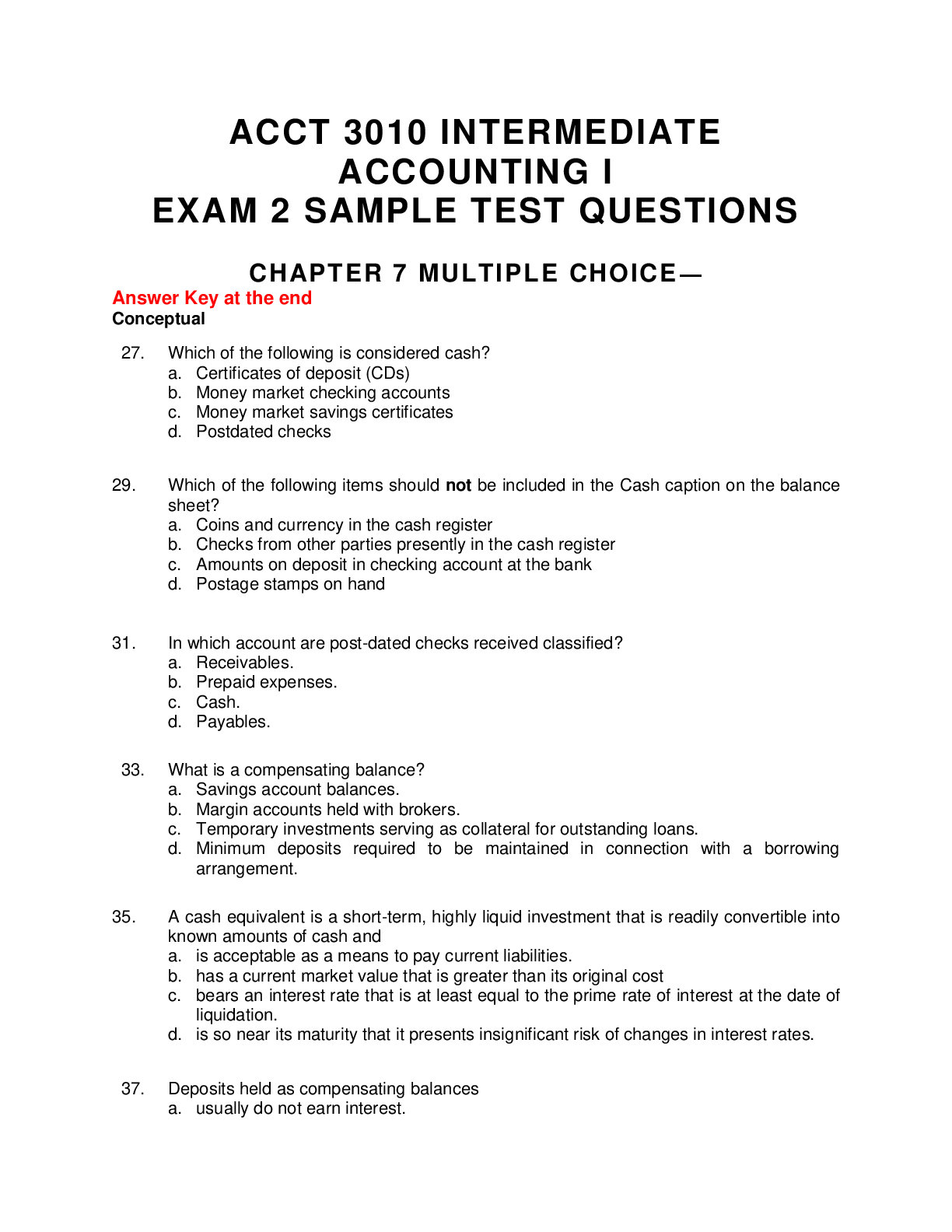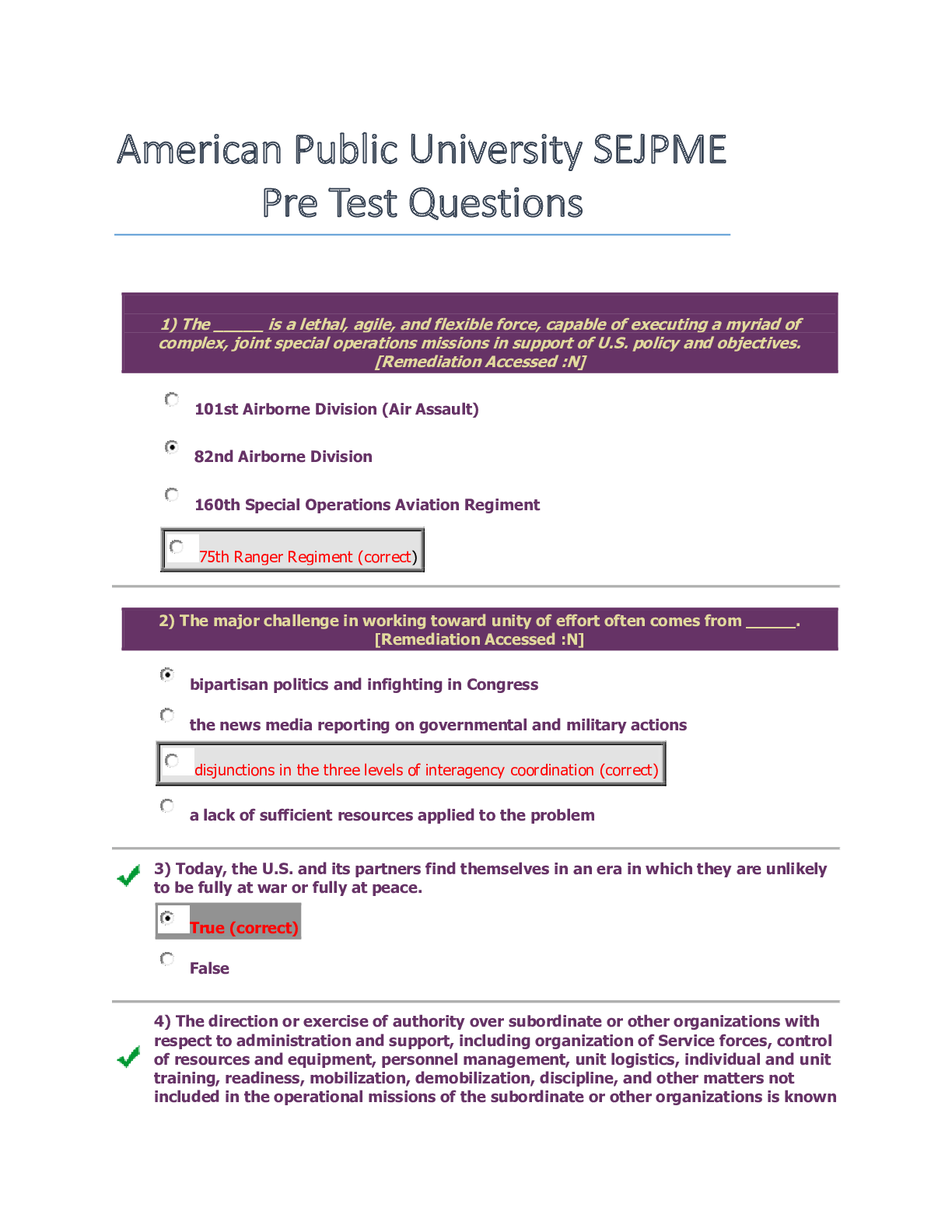*NURSING > QUESTIONS & ANSWERS > RNC-OB Exam test bank 2022 | Inpatient Obstetric Nurse Exam Prep 2022-2023: RNC Study Guide + 350 Te (All)
RNC-OB Exam test bank 2022 | Inpatient Obstetric Nurse Exam Prep 2022-2023: RNC Study Guide + 350 Test Questions and Detailed Answer Explanations.
Document Content and Description Below
1. Late in pregnancy, a patient often develops supine hypotension because of a. partial occlusion of the vena cava and aorta. b. decreased peripheral collateral circulation. c. increased blood flow... to the placenta. - Ans-A because of partial occlusion of the vena cava and aorta from the weight of the uterus. This impedes venous return from the lower extremities although increased collateral circulation during pregnancy helps to compensate. Remaining in the supine position for long periods of time could decrease fetal oxygenation as well. The lateral recumbent position relieves the pressure on the vena cava and aorta, allowing the blood pressure to increase and symptoms to decrease. The nurse must educate the new mother that a contraindication to breast feeding is a. fetal macrosomia. b. type II diabetes. c. infection with HIV/AIDS. - Ans-C Some maternal contraindications to breastfeeding include: -Infection with HIV/AIDS -Use of antiretroviral medications -Active TB not treated -Infection with human T-cell lymphotropic virus -Illicit drug use -Use of chemotherapeutic agents -Radiation therapy (may require only interruption during treatment) -Use of other medications that pass into the breast milk and may harm the child -Presence of herpes on the breast -Presence of varicella lesions on the breast (may resume after lesions crust)The initial postpartal intervention indicated for a soft boggy uterus is to a. apply an ice compress. b. massage the fundus until firm. c. apply a warm compress. - Ans-B ...with the dominant hand while supporting the inferior uterus with the non-dominant hand to prevent trauma. If the fundus does not contract with massage, then further evaluation is indicated to determine if placental fragments remain. After the fundus becomes contracted, the nurse should push firmly downward on the fundus to expel clots that may have pooled. With the vibroacoustic stimulation test, stimulus with an artificial larynx or other device is applied to the maternal abdomen for a. 1 to 3 seconds. b. 5 to 10 seconds. c. 1 to 2 minutes. - Ans-A Usually, stimulus is applied for 1-2 seconds and repeated up to 3 times with time extending to 3 seconds in order to stimulate fetal movement. A positive or reactive finding is an increased fetal heart rate of 15 bpm or more for at least 15 seconds; however, a nonreactive result does not always indicate fetal abnormality but indicates the need for further testing. Absence of the Moro reflex on one side only in a neonate may indicate a. fractured scapula. b. cerebral palsy. c. fractured clavicle. - Ans-C a fractured clavicle or brachial plexus injury. Damage to the central nervous system, such as may occur with cerebral palsy, often results in bilateral absence of the reflex. The Moro reflex is elicited by allowing the infant's head and trunk to fall slightly backward when the infant is raised. A positive Moro reflex includes immediate extension and abduction of the arms(and sometimes the legs) with fingers fanning and forming a C-shape with a return of the limbs to the flexed states In a multiparous woman, what is the lowest Bishop score that predicts labor induction will be successful? a. 5 b. 7c. 9 - Ans-A In a multiparous woman, the Bishop score that predicts that labor induction will be successful is 5 or more while it is a 9 or more for a nulliparous woman. The Bishop score is a rating system to determine readiness for induction based on scores of 0-3 in four different measures: dilation (cm), effacement (percentage), station (cm), and cervical consistency (firm, medium, soft), and cervical position (posterior, mid position, anterior). The fifth measure, cervical position, is scored only 0-2. When cervical laceration occur during delivery, they are most common at what position? a. 3 and 9 o'clock b. 12 and 6 o'clock c. 10 and 4 o'clock - Ans-A Cervical lacerations are most often identified with vaginal retractors when bleeding is persistent after delivery. The lacerations are sutured with absorbable sutures, so no further treatment is usually indicated. Minor lacerations often occur during delivery, but they usually require no treatment. Tears are more common after forceps assisted and vacuum assisted deliveries than normal vaginal births If using fetal pulse oximetry, what is normal oxygen saturation? a. 30% to 65% b. 65% to 90% c. 90% to 100% - Ans-A because of the fetus's high hemoglobin and hematocrit. A value below 30% may be associated with hypoxia and metabolic acidosis. For fetal pulse oximetry, which may be used to determine whether immediate intervention is needed for non-reassuring fetal heart rate, a special single-use sensor is placed internally along the fetal cheek, temple, or forehead. However, fetal pulse oximetry has not been found to reduce overall rates of Caesarean. A decrease of fetal heart rate of at least 15 bpm for at least 10 minutes is classified as a. recurrent deceleration. b. prolonged deceleration. c. baseline change. - Ans-C If it persists more than 2 minutes but less than 10 minutes, it is classified as a prolonged deceleration. Recurrent decelerations are classified as occurring with half or more of uterine contractions in a 20 minute period. Intermittent decelerations occur with fewer than half of uterine contractions in a 20 minute period.With suspected fetal hypoxia, a cord blood gas specimen is obtained during delivery by a. withdrawing blood from the vein/artery before the cord is clamped or cut and before placental expulsion. b. placing one clamp and withdrawing blood above the clamp before cutting the cord. c. double clamping a 10 to 20 cm segment, cutting it out, and then withdrawing blood from the segment. - Ans-C The segment can be placed on ice temporarily as cord blood gas can be accurately assessed for 60 minutes. An arterial sample is preferred over venous, but paired sampling is recommended. A pH of 7.24 or less is associated with neurological compromise. A base excess of 12 mmol/L or more is predictive of motor or cognitive impairment. When eliciting the scarf sign in a neonate, the infant's elbow crosses the midline of the chest, probably indicating a a. preterm infant. b. term infant. [Show More]
Last updated: 1 year ago
Preview 1 out of 92 pages
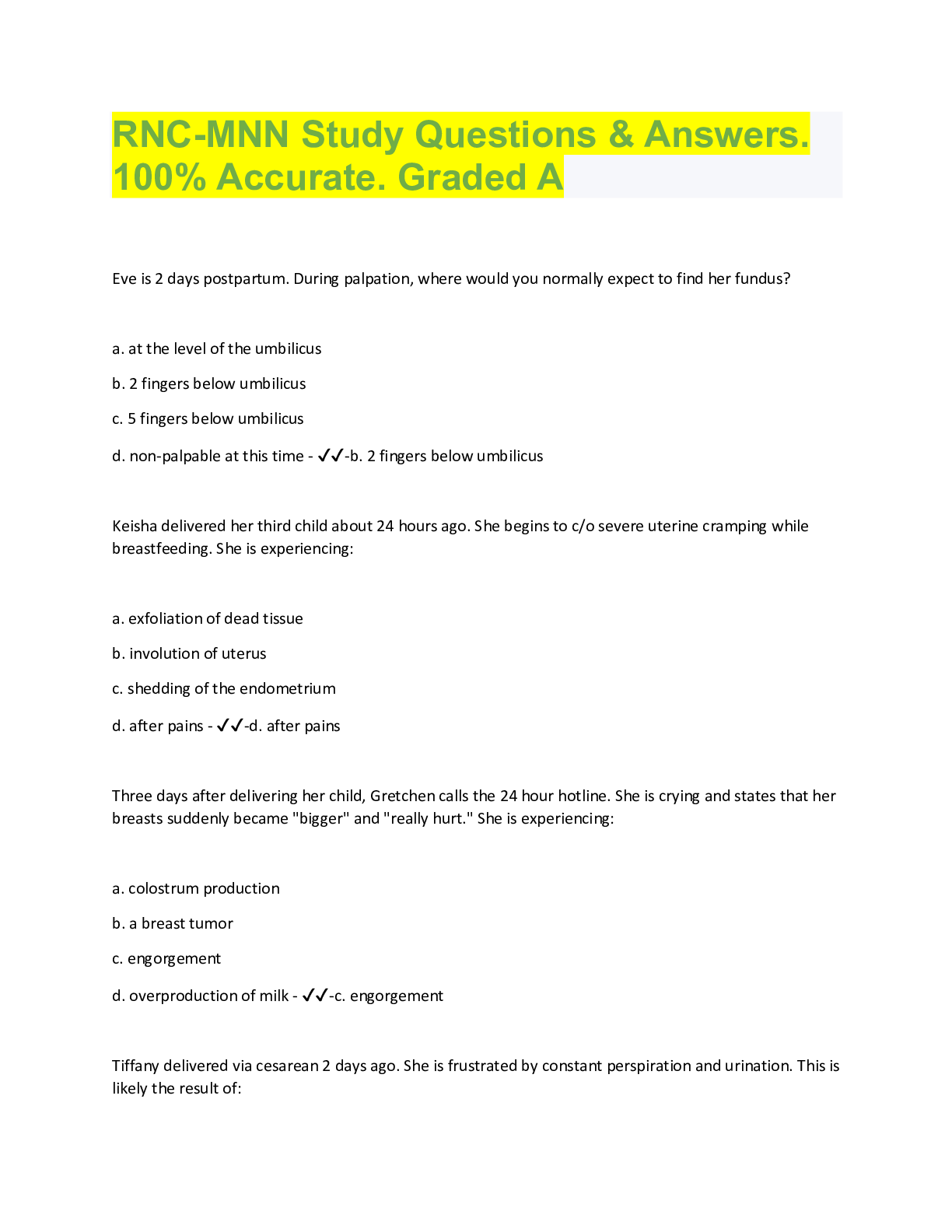
Reviews( 1 )

by laurenmccorkle · 1 year ago
Document information
Connected school, study & course
About the document
Uploaded On
May 26, 2022
Number of pages
92
Written in
Additional information
This document has been written for:
Uploaded
May 26, 2022
Downloads
2
Views
354







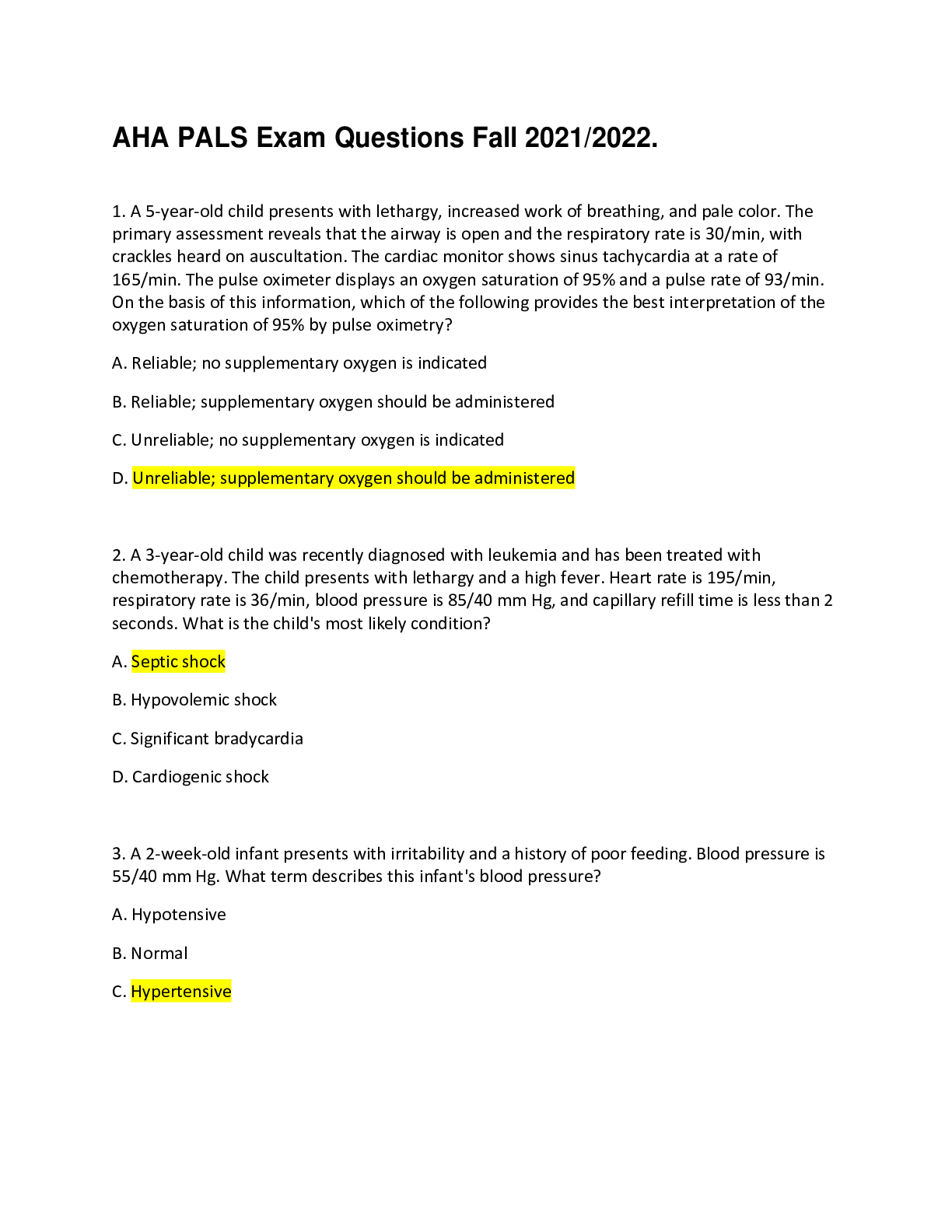

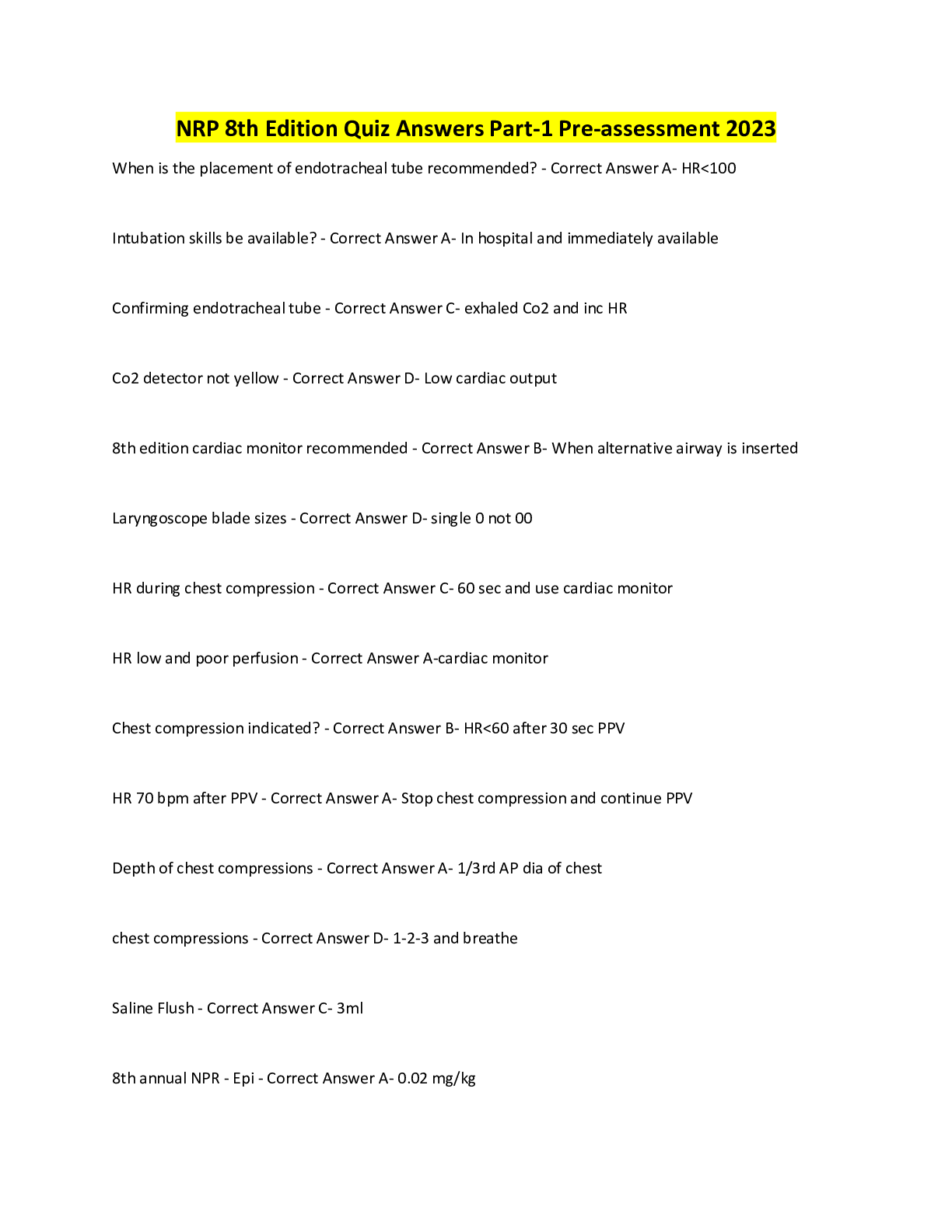

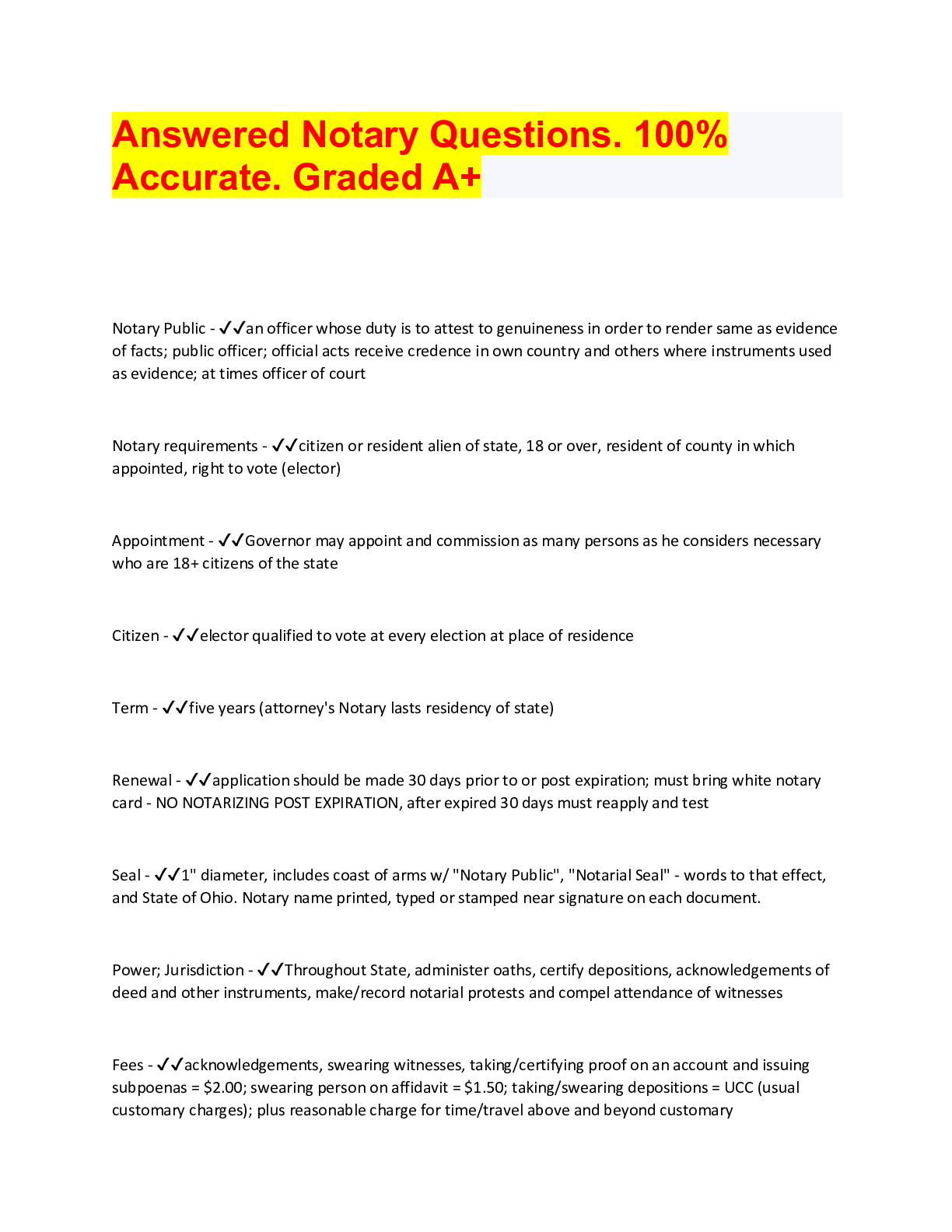

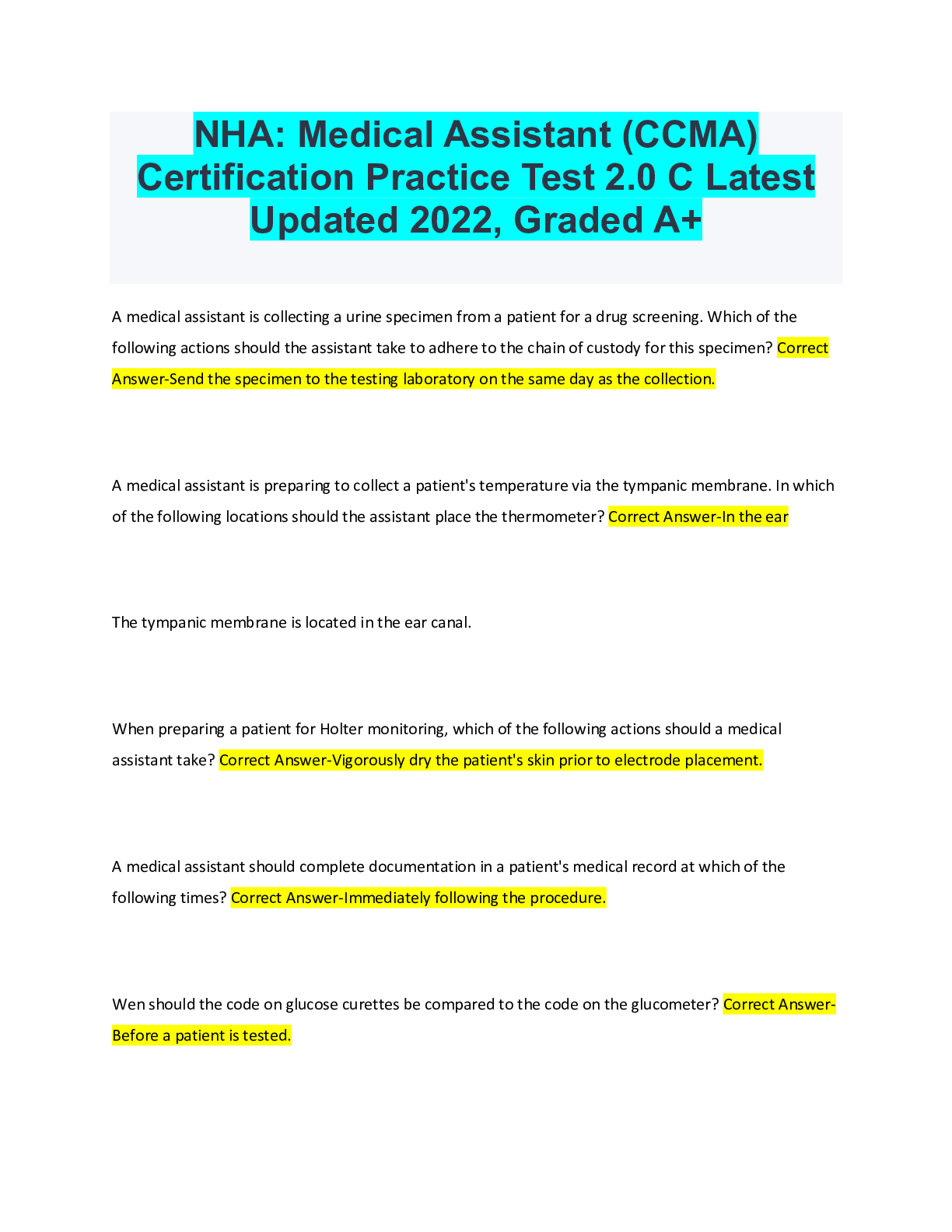

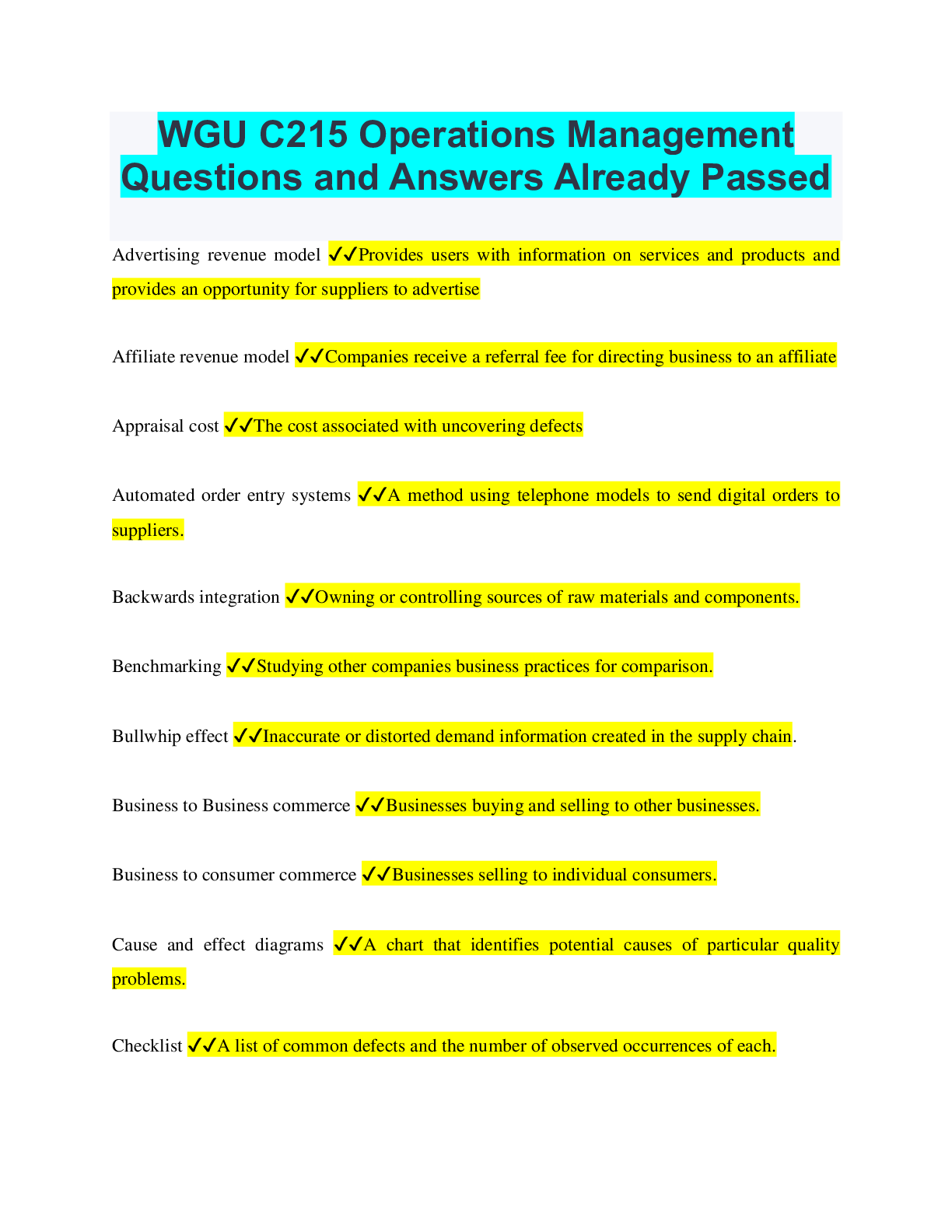
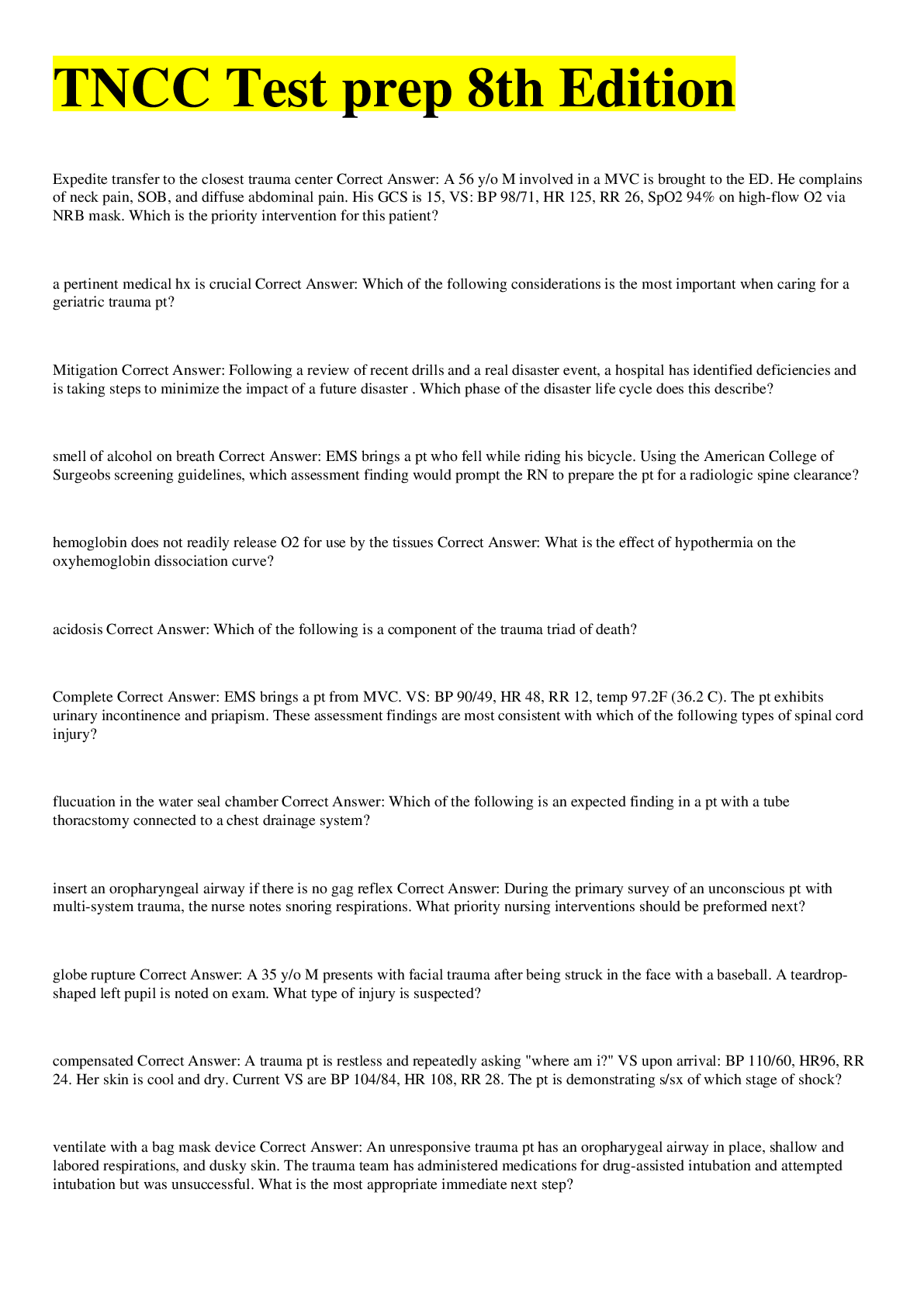


.png)
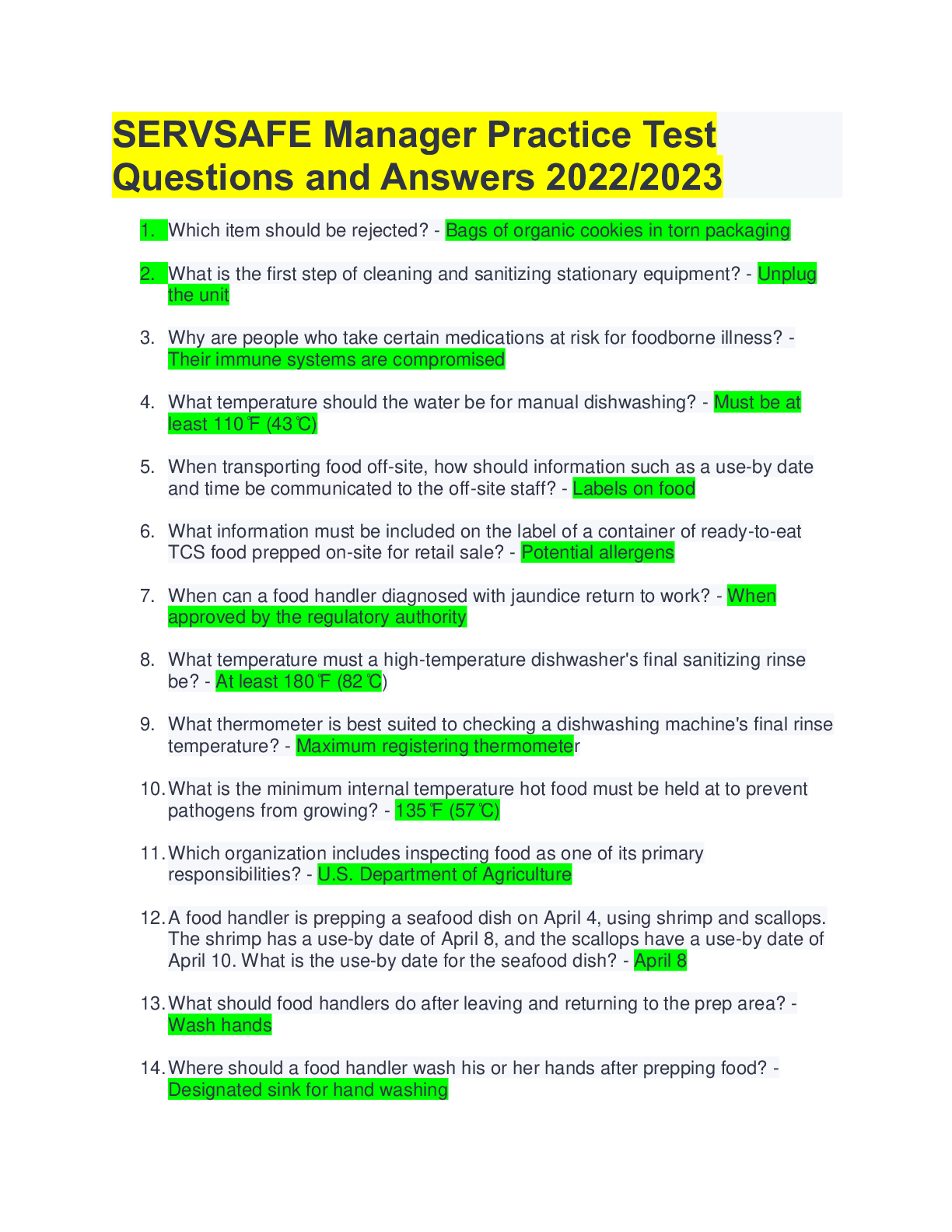
.png)
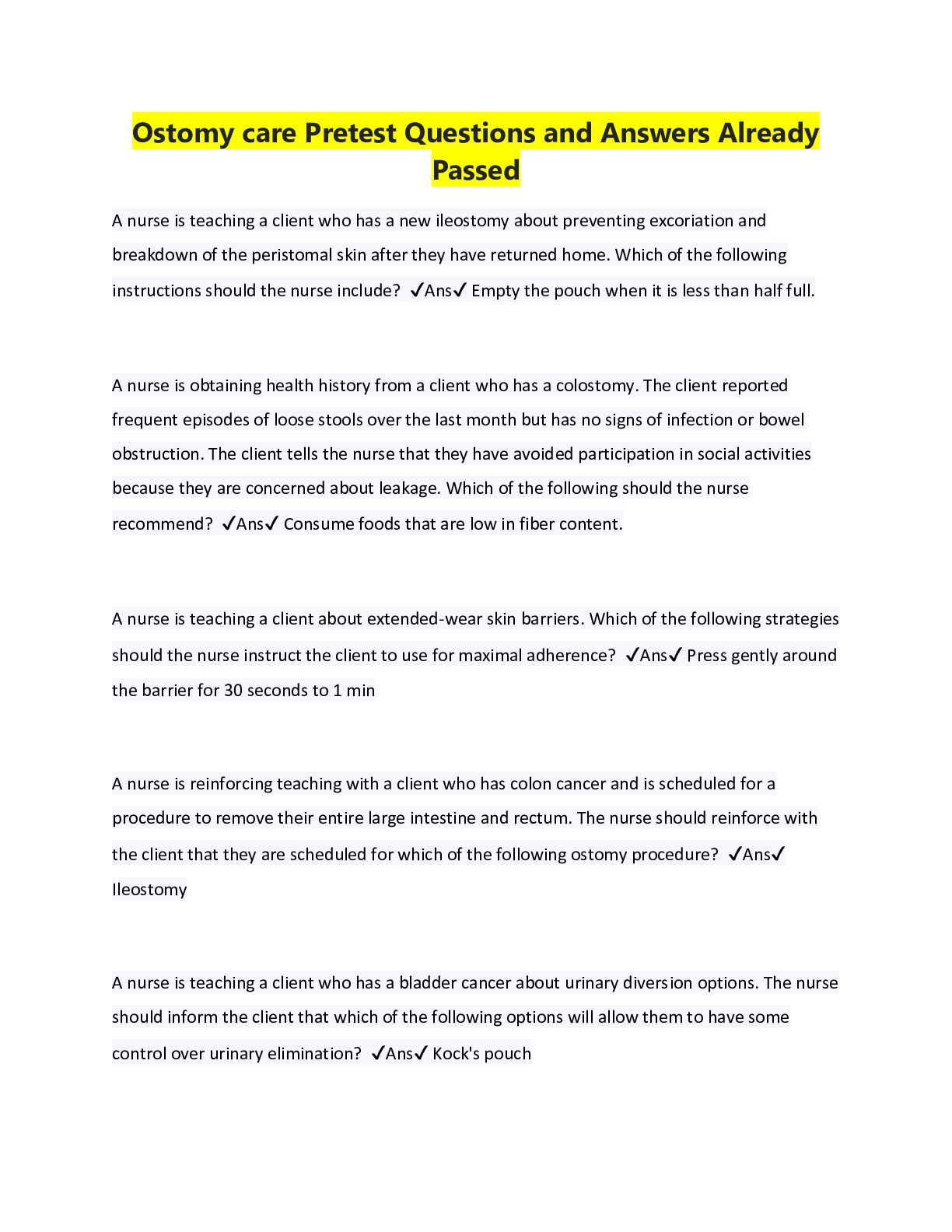
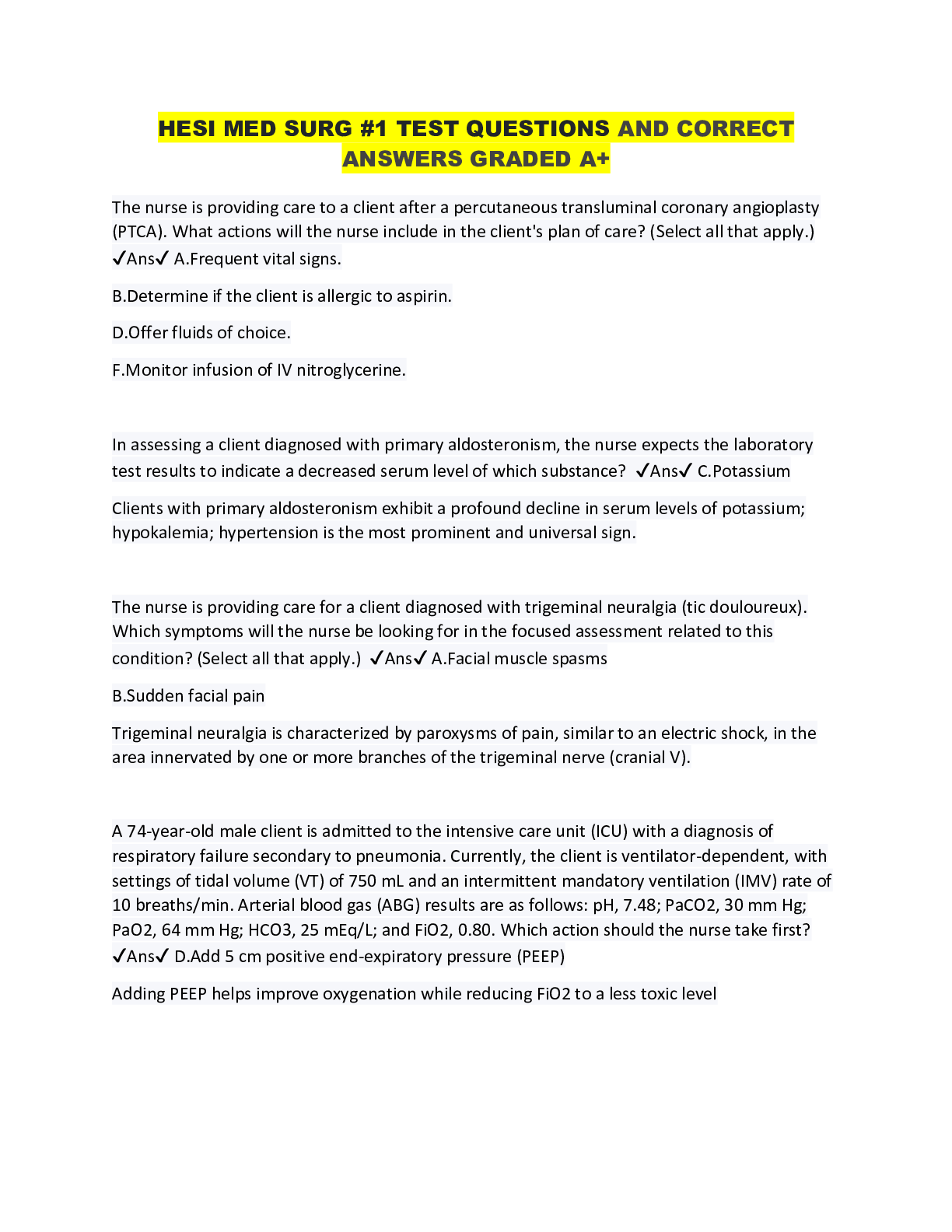
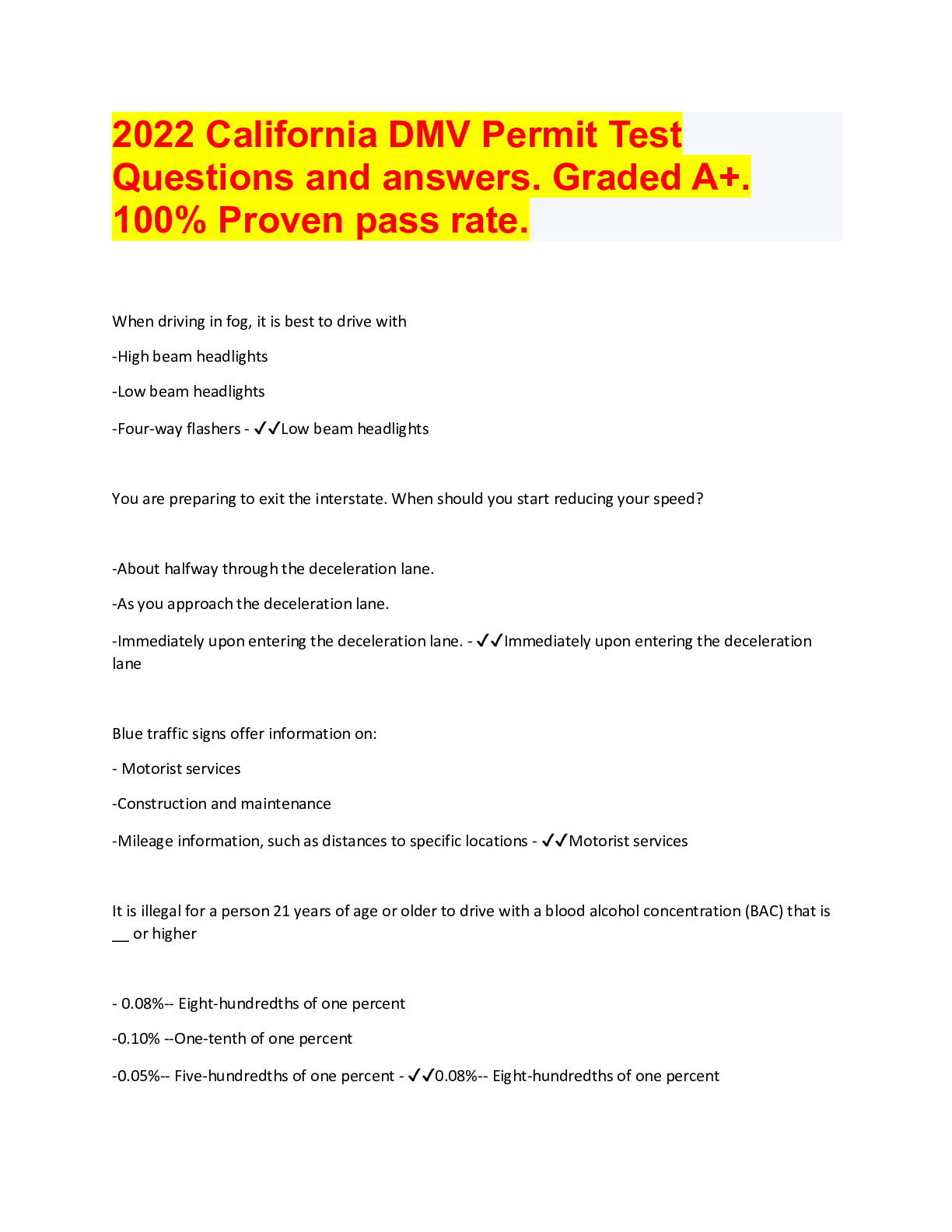
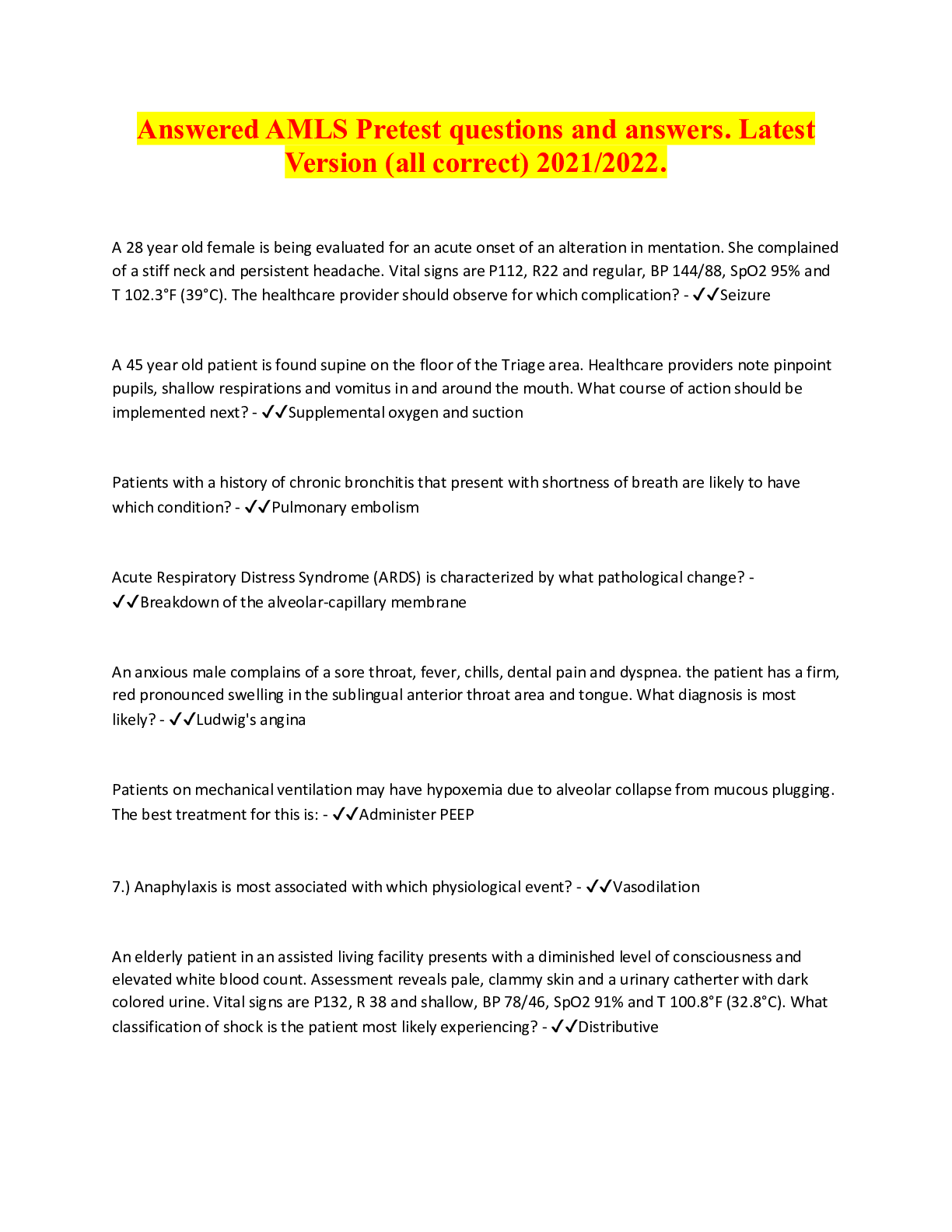
, Latest Questions and Answers with Explanations, All Correct Study Guide, Download to Score A.png)
, Latest Questions and Answers with Explanations, All Correct Study Guide, Download to Score A.png)
, Latest Questions and Answers with Explanations, All Correct Study Guide, Download to Score A.png)
, Latest Questions and Answers with Explanations, All Correct Study Guide, Download to Score A.png)
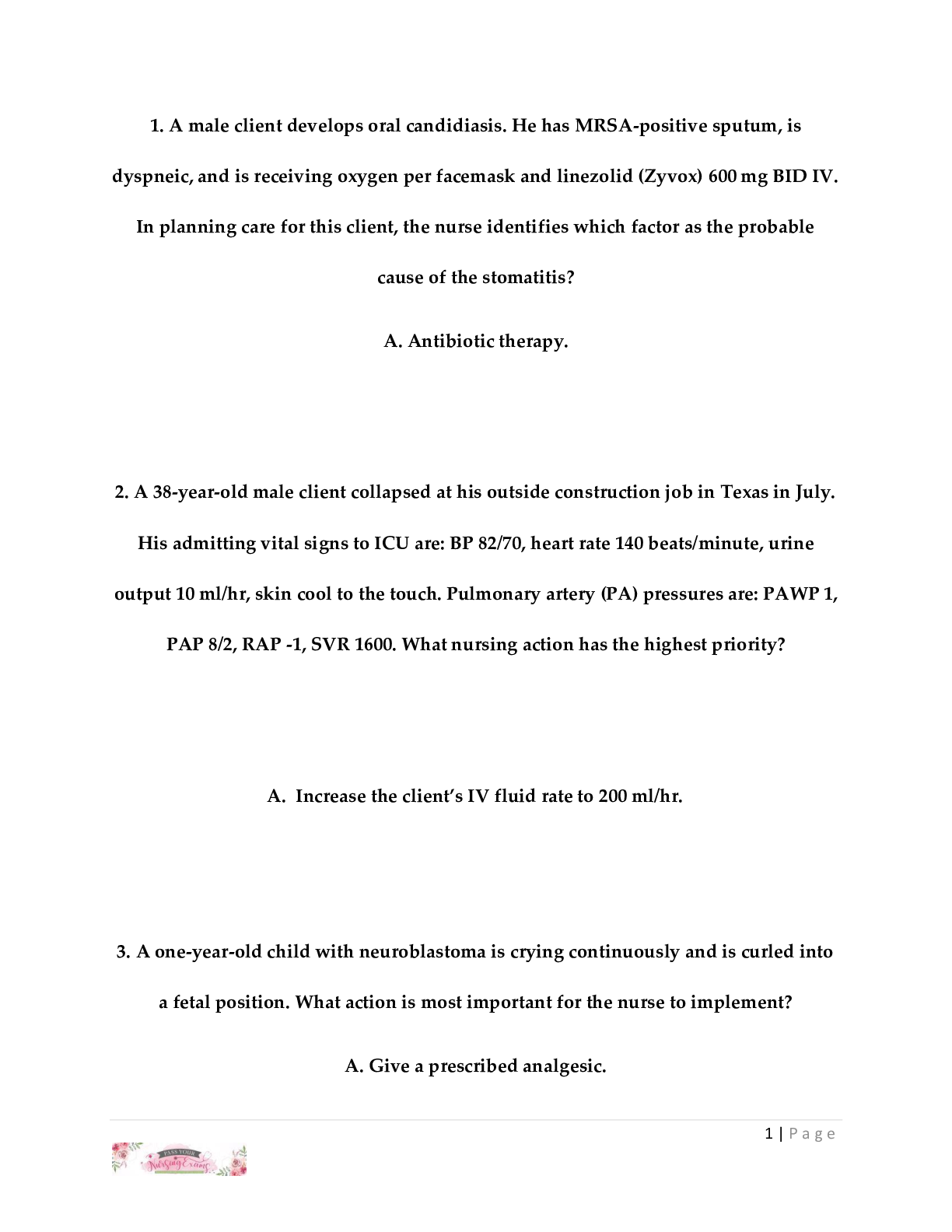
, Latest Questions and Answers with Explanations.png)
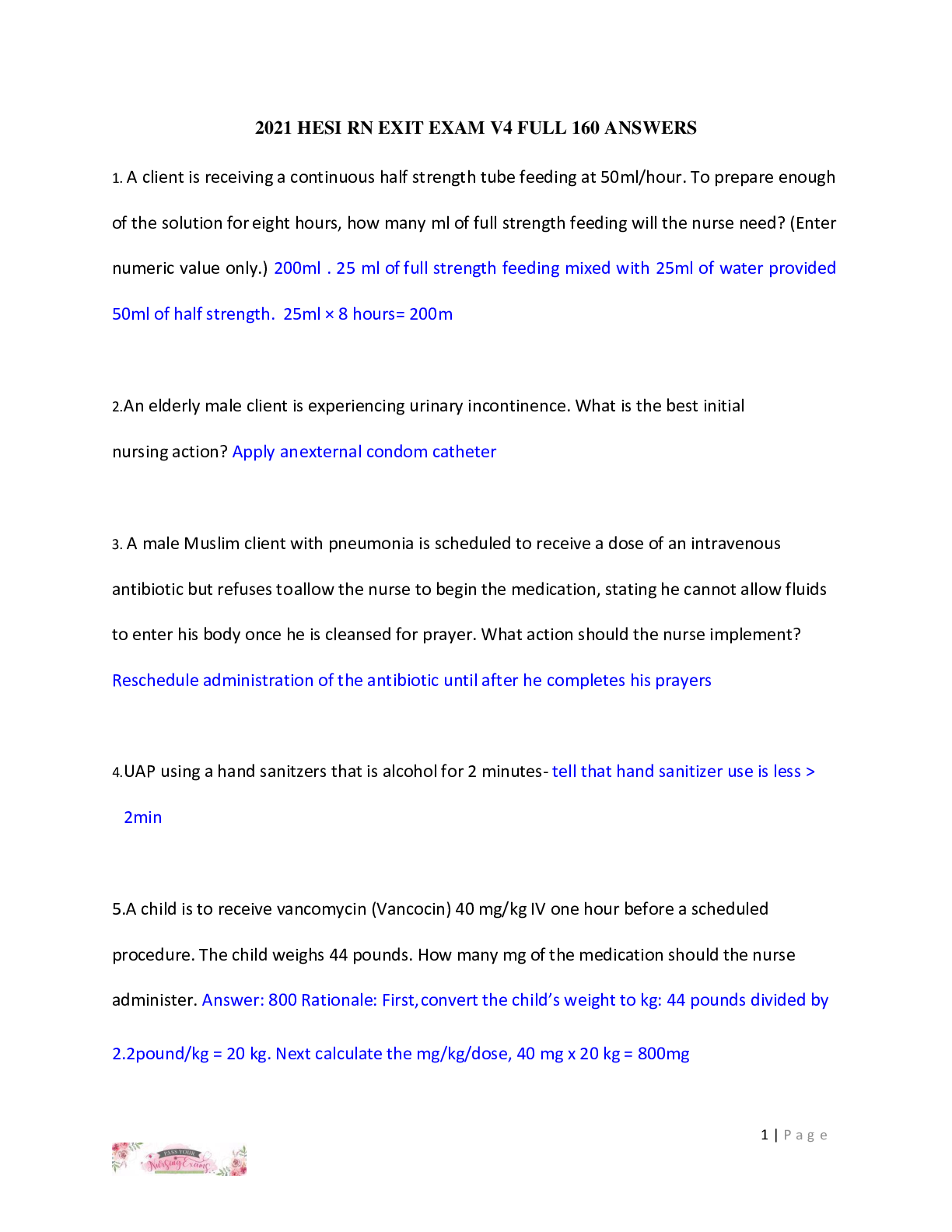
, Latest Questions and Answers with Explanations, All Correct Study Guide, Download to Score A.png)
 Correct Study Guide, Download to Score A.png)
